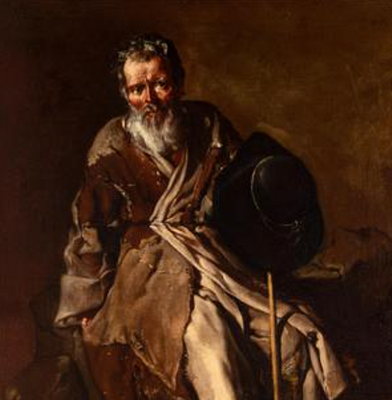Workshop of BARTOLOMÉ ESTEBAN MURILLO (Seville, 1617 - Cadiz, 1682), XVII century. "Salvator Mundi". Oil on copper.
Lot 52
About Seller
Setdart Auction House
Carrer Aragó 346
Barcelona
Spain
Setdart Subastas was born in 2004 and is currently the first online art auction in Spain with solidity, prestige and reliability guaranteed by our more than 60,000 users. Setdart has a young, dynamic and enterprising team ready to successfully manage the purchase and sale of art works through custom...Read more
Estimate:
EUR€7,000 - EUR€9,000
$7,291.67 - $9,375
Absentee vs Live bid
Two ways to bid:
- Leave a max absentee bid and the platform will bid on your behalf up to your maximum bid during the live auction.
- Bid live during the auction and your bids will be submitted real-time to the auctioneer.
Bid Increments
| Price | Bid Increment |
|---|---|
| EUR€0 | EUR€10 |
| EUR€200 | EUR€25 |
| EUR€500 | EUR€50 |
| EUR€1,000 | EUR€100 |
| EUR€3,000 | EUR€200 |
| EUR€5,000 | EUR€500 |
| EUR€10,000 | EUR€1,000 |
| EUR€20,000 | EUR€2,000 |
| EUR€50,000 | EUR€5,000 |
About Auction
By Setdart Auction House
Jun 1, 2021
Set Reminder
2021-06-01 09:45:00
2021-06-01 09:45:00
America/New_York
Bidsquare
Bidsquare : OLD MASTERS & SCULPTURE - Day 2
https://www.bidsquare.com/auctions/setdart-auction-house/old-masters-sculpture---day-2-6999
Setdart Auction House sofia@setdart.com
Setdart Auction House sofia@setdart.com
- Lot Description
Workshop of BARTOLOMÉ ESTEBAN MURILLO (Seville, 1617 - Cadiz, 1682), XVII century. "Salvator Mundi". Oil on copper. Size: 15 x 10 cm; 17 x 12,7 cm (frame). This oil painting, framed within the Murillo school (probably a work of Murillo's workshop), shows Christ as "Salvator Mundi", an iconography that represents the Christological concept of Jesus Christ as universal savior, in relation to his role as judge in the Final Judgment and his character of Redeemer. It is characterized by presenting Christ raising his right hand as a sign of blessing, while he supports with his left hand an orb symbolizing the universe, emphasizing the universal character of Christian doctrine and of Christ's redemptive act. The model chosen by the painter here is an adolescent Christ, very close to the Murillo children, faithful to the way in which the Sevillian master resolved the soft flesh tones, the soft features and the velvety tones, moving away from the hieratic models associated with the iconography of the Salvator Mundi. Baroque naturalism can be appreciated in the draperies combined with idealism in the way of resolving the candid countenance. Due to its formal characteristics we can relate this work to the school of Murillo, an author whose influence was key to the development of the full baroque not only in the Sevillian school, but also in other areas. Considered by some as the painter who best defines the Spanish Baroque, this master exerted a remarkable influence among his Sevillian contemporaries and, after his death, his wake can be found in other schools even to this day, especially in religious art. In the 18th century his language and iconographic formulas were widely followed and repeated, and during Romanticism numerous copies of his works were made. However, it will be in the Baroque of the eighteenth century when the importance of his influence is most appreciated, spread by his numerous disciples and followers. In fact, in that century he was the best known and most appreciated Spanish painter outside Spain, the only one of whom Sandrart includes a biography in his "Academia picturae eruditae", a work of the late seventeenth century. In the last decades of the 17th century, the emotional, sweet and delicate sentimentality of Murillo prevailed in Seville over the more dramatic one of Valdés Leal, and hence the predominance of his influence in the following century. However, as time progresses, we will find ourselves before an increasingly superficial influence, which focuses on the imitation of models and compositions but leaving aside its plastic language, in favor of formulas more typical of the new century.
- Shipping Info
-
In-house shipping available. Please inquire at admin@setdart.com.
-
- Buyer's Premium



 EUR
EUR CAD
CAD AUD
AUD GBP
GBP MXN
MXN HKD
HKD CNY
CNY MYR
MYR SEK
SEK SGD
SGD CHF
CHF THB
THB















